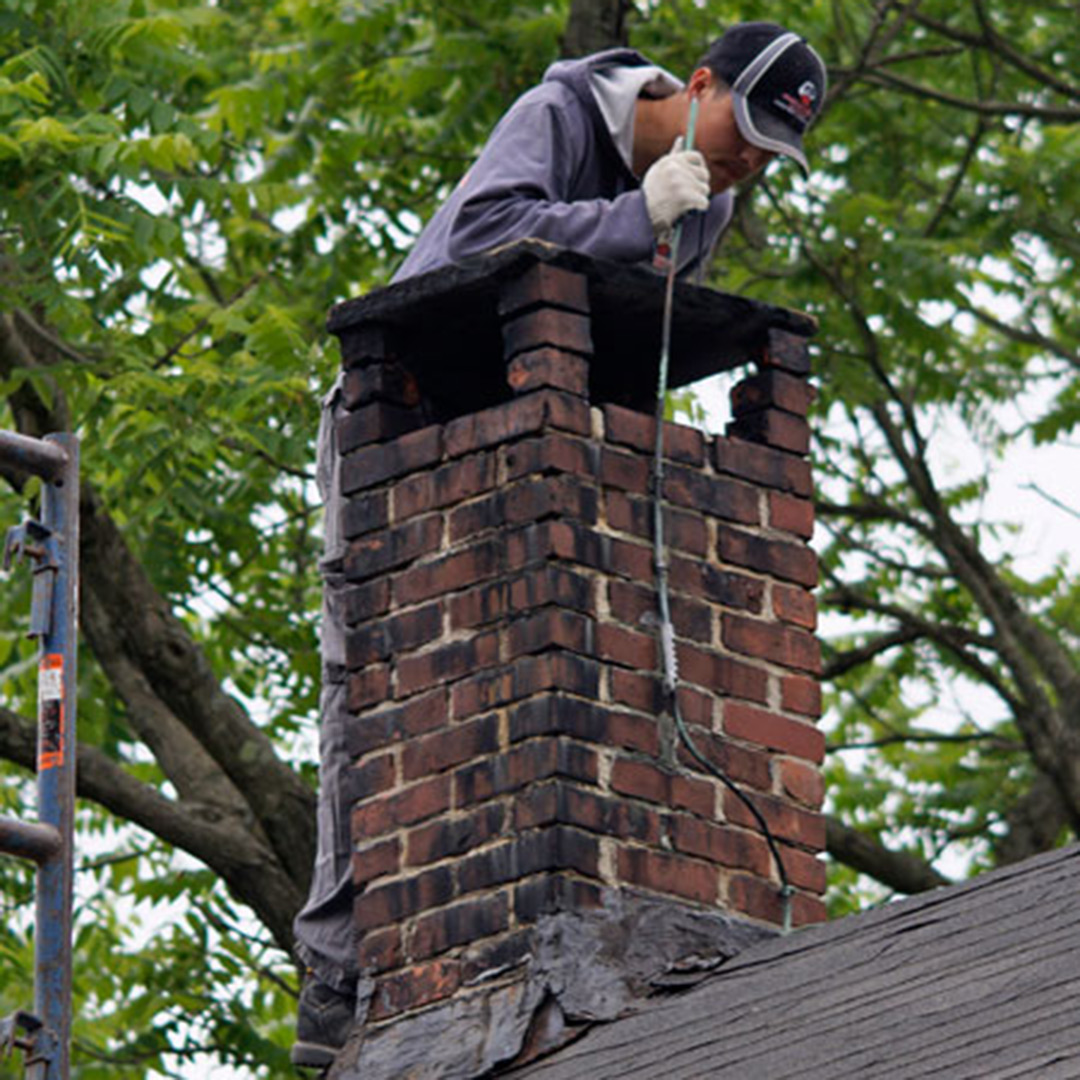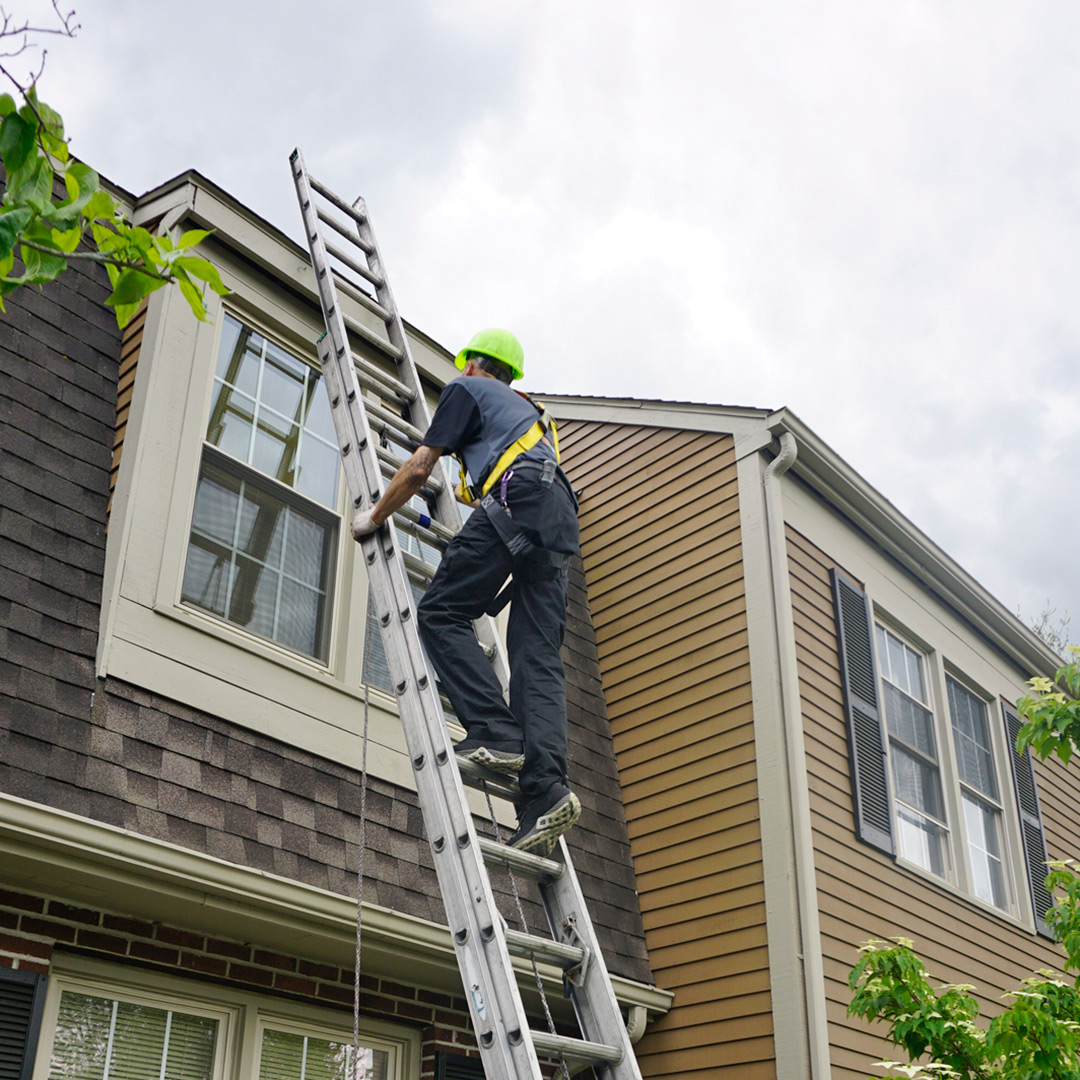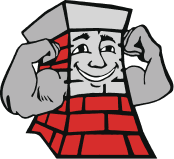Our qualified chimney sweep crew offers annual chimney inspections & chimney cleaning services in towns like West Hartford, Marlborough, Manchester, Bolton, Colchester, Tolland, East Hampton, Chesire, Southington and all of Central Connecticut.
The condition of your chimney is of utmost importance to the safe operation of your fireplace or stove, and chimney venting system. Every year, there are thousands of chimney fires, cases of carbon monoxide poisoning, and other chimney related emergencies that all could have been prevented with proper chimney maintenance. Here are a few tips regarding chimney safety from qualified Chimney Sweeps:

Avoid Chimney Fires
There are over 25,000 chimney fires each year in the U.S. alone. These catastrophes account for over 120 million dollars in damage to property every single year, but there are ways to prevent detrimental chimney fires.
- Chimney Liners - Deteriorated or cracked chimney liners and/or structural problems can allow high temperatures, sparks, or embers to escape to combustible areas in walls, roofs or attics. Be aware of the current state of your liner and replace your chimney liner if it is in poor shape or deteriorated beyond functional use.
- Creosote - A common cause of chimney fires is a dangerous buildup of creosote inside the chimney. Creosote is a tar-like, foul smelling, corrosive and extremely combustible substance that is a by-product of burning wood. If no precautions are taken, creosote will coat the inside of your chimney leading to dangerous blockages and potential chimney fires if not removed during a regular annual chimney cleaning by chimney sweeps.
- Debris - If debris has fallen down the flue of your chimney, whether it's an animal nest or twigs & dry leaves, a stray ember may ignite the blockage causing a dangerous chimney fire. Before you light your first fire of the season, have a chimney sweep check for blockages from debris.
Beware of Carbon Monoxide Dangers
Carbon monoxide is the #1 cause of poisoning fatalities in the U.S., affecting approximately 500 people a year. CO is odorless and invisible, but with proper care can be prevented entirely. Gas & wood burning fireplaces and stoves are the leading source of exposure to CO poisoning. A fire that burns efficiently and has proper ventilation up through a sound chimney does not typically release dangerous quantities of carbon monoxide into a home, but faulty venting system or fuel-burning appliance can cause a large amount of CO to build up inside of your living space. Here are some tips for preventing CO poisoning:
- Install at least one smoke alarm and a carbon monoxide alarm on each level of your home and near bedrooms.
- Always open chimney dampers before lighting a fire.
- Do not use power generators inside.
- Only operate space heaters in well-ventilated areas.
- At least once annually, hire a professional chimney sweep to clean and inspect your chimney.
 Have an Annual Chimney Inspection
Have an Annual Chimney Inspection
Annual chimney inspections by a qualified chimney sweep can help to prevent carbon monoxide poisoning & chimney fires, and can also identify potential issues with your chimney system including liner deterioration and blockages. Taking this annual preventative maintenance can save you thousands of dollars in damage or repairs so it's worth having your local chimney sweep come out to service and inspect your chimney system before the first fire of the season.
According to The Chimney Safety Institute of America (), "The U.S. Consumer Product Safety Commission, the U.S. Environmental Protection Agency, the National Fire Protection Association, and the American Lung Association – are some of the organizations that now encourage the regular maintenance of home heating systems and their chimneys..." to help prevent the dangers related to chimney and fireplace usage. If you think you are due for an annual chimney inspection or yearly chimney cleaning, give us a call today. Our highly-skilled and professional chimney sweeps are ready to give you peace of mind and help ensure that your chimney & venting systems are operating safely and efficiently.



